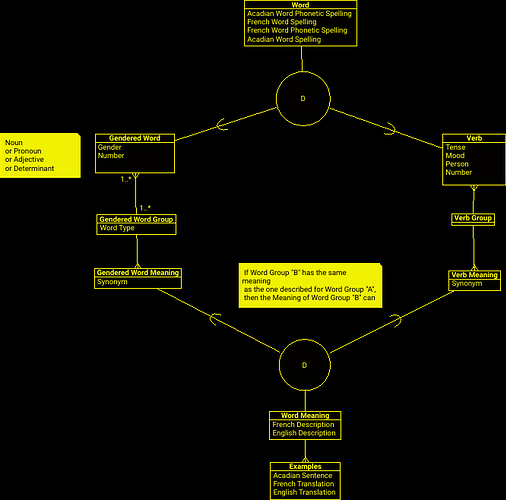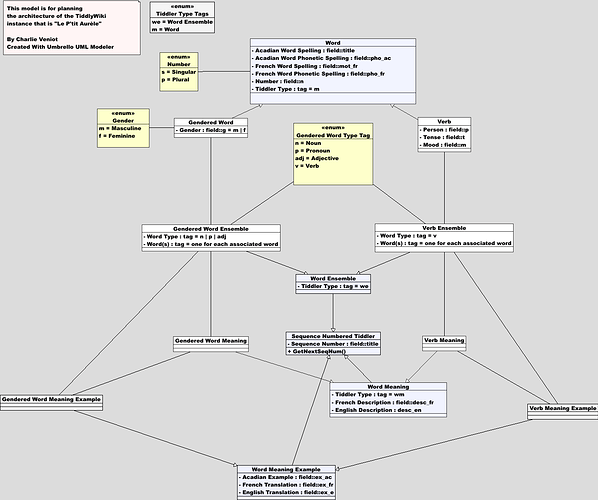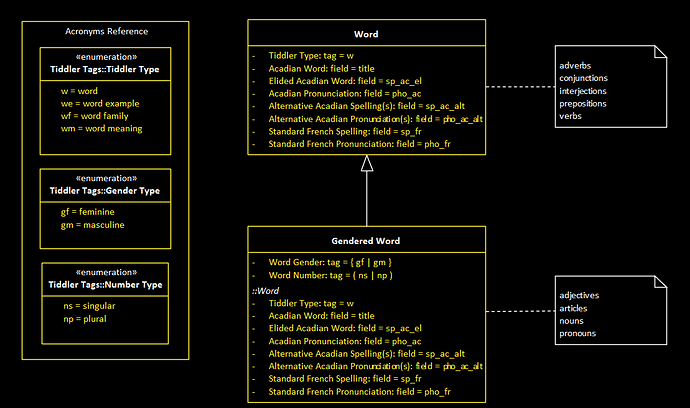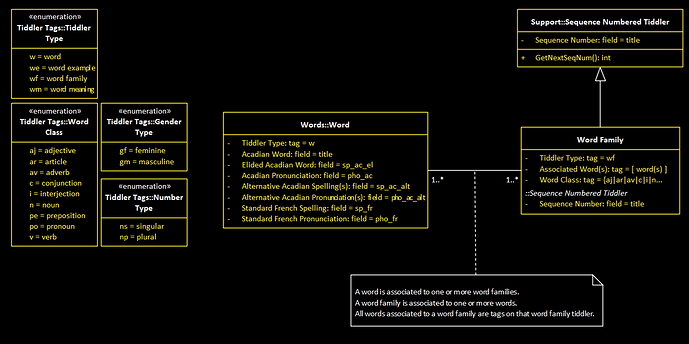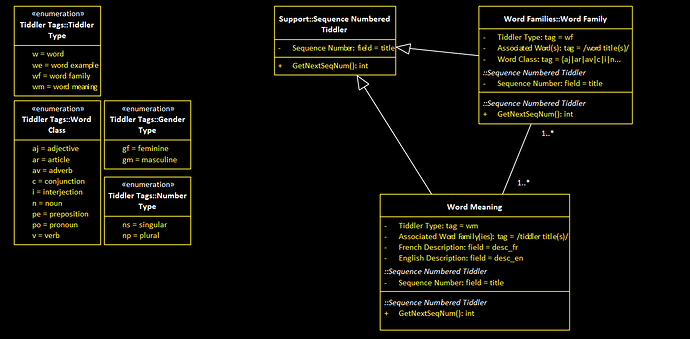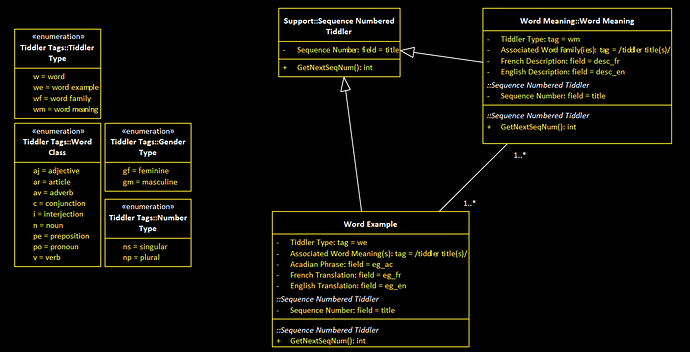(TiddlyWiki project)
For “Phonology and Spelling” attributes, I’ve added an “Old” checkbox for the “Standard French” spelling and punctuation.
For any Acadian word that is a spelling variant (because of phonetic mutation) of a Standard French word, I’ll enter the Standard French spelling and pronunciation.
Because the Standard French words are also spoken in Acadie, I include such words in the dictionary.
However, some Acadian words are based on “Old French” words that are not used today. I don’t want those words listed in my dictionary, so the checkbox flags a word for exclusion.

